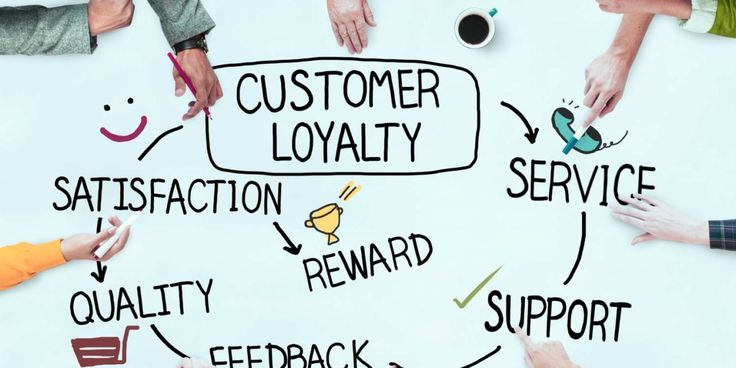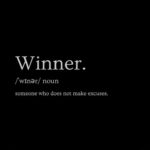Let’s get one thing straight before we talk about “best practices” or “top retention tools.”
Customer retention in 2025 is not a department. It’s not a line item on your marketing plan. It’s not a once a quarter campaign or a CRM automation flow you set and forget.
It’s the beating heart of your business.
And the truth is, most companies are still treating it like a side hustle. They pour money into acquisition, optimize their ads, obsess over CAC, and then hand retention over to a few emails and a loyalty discount code.
That mindset doesn’t work anymore.
Because in 2025, your customer retention program is your growth engine. And if you’re not designing it with the same intention, creativity, and data driven precision as your acquisition funnel, you’re leaving serious revenue and loyalty on the table.
The New Rules of Retention in 2025
Before we break down how to build a customer retention program that actually works, it’s worth understanding how the game has changed.
In the past, “retention marketing” was a relatively straightforward playbook:
- Capture emails.
- Send a discount.
- Maybe start a loyalty program.
But here’s what’s different now:
- Retention is proactive, not reactive. It’s about anticipating customer needs, not waiting for churn signals.
- Automation is powerful but not enough. Personalisation isn’t about inserting a first name anymore. It’s about context, behaviour, timing, and intent.
- Success is measured in relationships, not repeat purchases. Customers stay because they feel connected, not because they’re trapped in a funnel.
With that in mind, let’s talk about how to design a customer retention strategy built for the realities of 2025.
1. Start With a Retention Mindset, Not a Campaign
Most “client retention programs” fail before they begin because they’re designed like marketing campaigns: start date, end date, KPI, done.
But retention isn’t a campaign, it’s a culture. It has to be baked into how you design your product, onboard your customers, communicate, and measure success.
Here’s where that starts:
- Shift your KPI: Don’t just track purchases. Track time to value, repeat engagement, and customer health scores.
- Map the full journey: Retention isn’t just post-purchase. It starts the moment someone enters your ecosystem.
- Create ownership: Every team from product to support to sales, needs to see retention as their job, not marketing’s problem.
Retention programs that thrive are the ones built with cross-functional ownership from day one.
2. Design Your Retention Flywheel (Not a Funnel)
Funnels are linear. Retention is cyclical. And if you want to build a program that compounds over time, you need a retention flywheel, a system where every interaction builds momentum toward deeper loyalty.
Here’s what that looks like:
- Onboard Intentionally: The retention journey starts before the first purchase is complete. A great onboarding experience can reduce churn by 60% yet most brands treat it as an afterthought.
- Guide users to their first “aha” moment quickly.
- Personalise onboarding based on what you know about them.
- Use a mix of automation like triggered emails and human touchpoints (like personal check-ins).
- Guide users to their first “aha” moment quickly.
- Deliver Continuous Value: Customers churn when the value stops.
- Regularly surface new ways for them to use or benefit from your product.
- Use CRM retention strategies to deliver content, education, and support that keeps them engaged.
- Regularly surface new ways for them to use or benefit from your product.
- Celebrate Milestones: Loyalty grows when people feel recognised.
- Celebrate anniversaries, milestones, or usage achievements.
- Make customers feel part of your brand’s growth story.
- Celebrate anniversaries, milestones, or usage achievements.
- Create Feedback Loops: Don’t guess why people stay, ask them directly.
- Use NPS, feedback surveys, and direct conversations to refine your customer success retention strategies.
- Close the loop by acting on that feedback and showing customers how their input shapes change.
- Use NPS, feedback surveys, and direct conversations to refine your customer success retention strategies.
- Reward Advocacy: Turn loyal customers into growth drivers.
- Build referral and advocacy programs that make sharing rewarding.
- Spotlight customers publicly, community builds stickiness.
- Build referral and advocacy programs that make sharing rewarding.
3. Automate the Routine, Humanise the Critical
There’s a dangerous misconception that automation kills retention. It doesn’t but when used well, it actually fuels it.
The goal isn’t to automate everything. It’s to automate the routine so you can invest your human energy where it matters most.
Here’s how leading brands are doing it in 2025:
- Automate:
- Transactional emails (order confirmations, shipping updates)
- Personalised product recommendations
- Smart re-engagement sequences based on behaviour
- Dynamic content in retention campaigns based on CRM segmentation
- Transactional emails (order confirmations, shipping updates)
- Humanise:
- Onboarding calls for high-value customers
- Surprise & delight moments (like handwritten thank-you notes or video check-ins)
- Strategic account reviews for B2B clients
- Real conversations in private communities or loyalty spaces
- Onboarding calls for high-value customers
The most successful customer retention programs combine both. They use automation for scale and human connection for depth.
4. Personalisation: Beyond the First Name
“Hi (First Name)” is not personalisation. In 2025, personalisation is about context, timing, and relevance. It’s about showing up in a way that feels like you truly know the customer, not just their contact info.
Some examples of what real personalisation looks like now:
- Behavioral personalisation: Trigger retention campaigns based on usage patterns, not generic timeframes.
- Lifecycle personalisation: Adjust tone, offers, and messaging based on where they are in the customer journey.
- Intent-based personalisation: Predict what customers might need next based on signals and proactively offer it.
In ecommerce retention strategies, for example, this might mean recommending skincare refills right before they run out, not two weeks after.
In B2B, it might mean sending a custom ROI report tied to a client’s specific KPIs, not a generic feature update email.
5. Build Retention Into Your Product Experience
No amount of CRM retention strategies or automated emails can fix a bad product experience.
The strongest customer retention programs are designed from the inside out with retention baked into the product itself.
Ask yourself:
- Does the product evolve with the customer’s needs?
- Are there built-in moments that encourage habit formation?
- Is there built-in friction that nudges engagement (like streaks, rewards, or unlockable content)?
- Does the experience improve the longer they stay?
When retention is engineered into the product, marketing simply amplifies what’s already working.
6. Don’t Measure Retention, Diagnose It
If you’re not measuring retention, you’re guessing. But if you’re only measuring churn rate, you’re still guessing.
In 2025, successful retention programs use multi-dimensional metrics to understand the full picture:
- Customer Health Score: A composite metric combining product usage, support tickets, feedback, and engagement.
- Time to Value (TTV): How quickly customers reach their first moment of success.
- Customer Lifetime Value (CLV): The most important metric for long-term growth.
- Engagement Depth: Are customers using more features or buying more categories over time?
- Advocacy Rate: How many customers refer or recommend you to others?
Data is the backbone of a retention program but insight is the muscle. Use your CRM not just to track retention, but to understand why customers stay or leave.
7. The Evolution of B2B Customer Retention Strategies
If you’re in B2B, retention looks a little different but the principles are the same. The key difference? The stakes are higher, and the relationships deeper.
Here’s what’s working in 2025:
- Strategic Success Plans: Co-create roadmaps with clients and review them quarterly.
- Customer Success as a Growth Driver: Your CS team shouldn’t just solve problems they should drive outcomes.
- Executive Alignment: Build relationships beyond the main contact. Retention risk multiplies if only one stakeholder is engaged.
- Value Layering: Continuously layer in new insights, features, or services that expand ROI.
B2B retention is not about renewals, it’s about results. When you’re seen as essential to a client’s growth, they don’t just renew. They expand.
8. Retention Is the New Acquisition
Here’s the part too many businesses still overlook: retention isn’t just cheaper than acquisition, it drives acquisition.
Happy customers don’t just stick around. They spend more, they refer more, and they become advocates who bring in new business.
In fact:
- Increasing customer retention by just 5% can increase profits by 25–95%.
- Loyal customers spend 67% more on average than new ones.
- Word-of-mouth remains the #1 most trusted source of new business.
Retention isn’t just a revenue strategy. It’s a growth strategy.
Final Thought: The Future of Retention Is Relationship
We’re entering an era where products are easy to copy, pricing wars are endless, and customer attention is shorter than ever.
But there’s one thing competitors can’t replicate: the depth of your relationships.
The businesses thriving in 2025 aren’t the ones with the biggest ad budgets or the flashiest funnels. They’re the ones that treat customer retention as a discipline — a living, evolving program rooted in automation, fuelled by personalisation, and elevated by genuine human connection.Retention is not the end of the customer journey.
It is the Journey.




